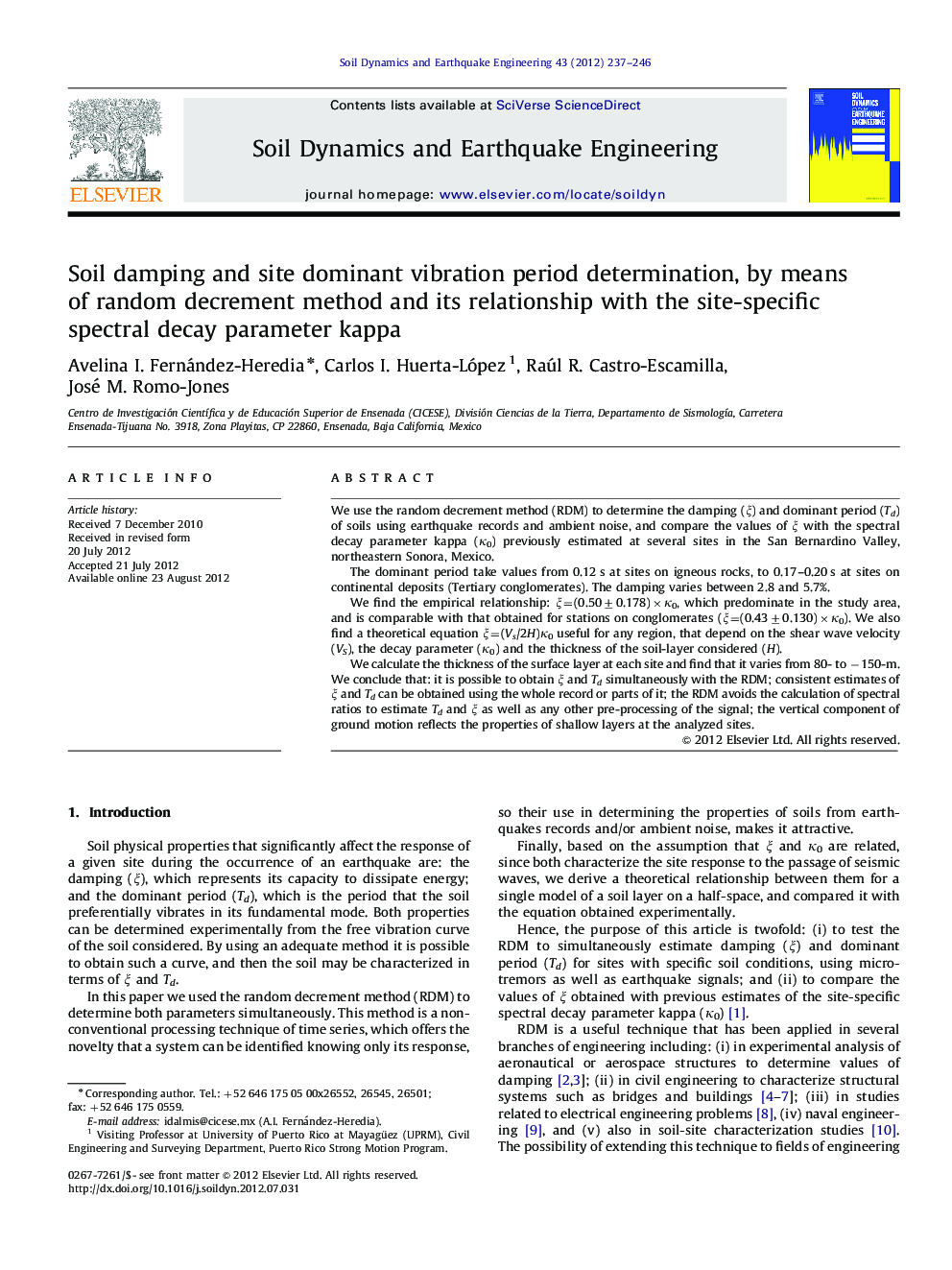| Article ID | Journal | Published Year | Pages | File Type |
|---|---|---|---|---|
| 304429 | Soil Dynamics and Earthquake Engineering | 2012 | 10 Pages |
We use the random decrement method (RDM) to determine the damping (ξ) and dominant period (Td) of soils using earthquake records and ambient noise, and compare the values of ξ with the spectral decay parameter kappa (κ0) previously estimated at several sites in the San Bernardino Valley, northeastern Sonora, Mexico.The dominant period take values from 0.12 s at sites on igneous rocks, to 0.17–0.20 s at sites on continental deposits (Tertiary conglomerates). The damping varies between 2.8 and 5.7%.We find the empirical relationship: ξ=(0.50±0.178)×κ0, which predominate in the study area, and is comparable with that obtained for stations on conglomerates (ξ=(0.43±0.130)×κ0). We also find a theoretical equation ξ=(Vs/2H)κ0 useful for any region, that depend on the shear wave velocity (VS), the decay parameter (κ0) and the thickness of the soil-layer considered (H).We calculate the thickness of the surface layer at each site and find that it varies from 80- to −150-m. We conclude that: it is possible to obtain ξ and Td simultaneously with the RDM; consistent estimates of ξ and Td can be obtained using the whole record or parts of it; the RDM avoids the calculation of spectral ratios to estimate Td and ξ as well as any other pre-processing of the signal; the vertical component of ground motion reflects the properties of shallow layers at the analyzed sites.
► We test random decrement method to estimate damping and dominant period at different sites. ► Consistent estimates are obtained using whole earthquakes records or parts of them. It is not necessary to calculate H/V ratios. ► We found equations related site-specific spectral decay parameter and damping in the region. ► Different seismic response is due probably to different degrees of fracturing and weathering of rocks.
